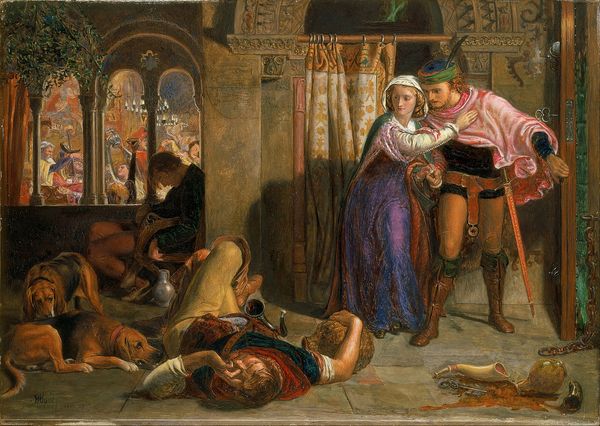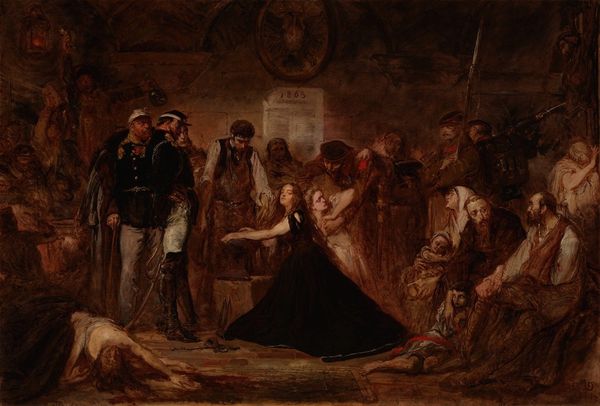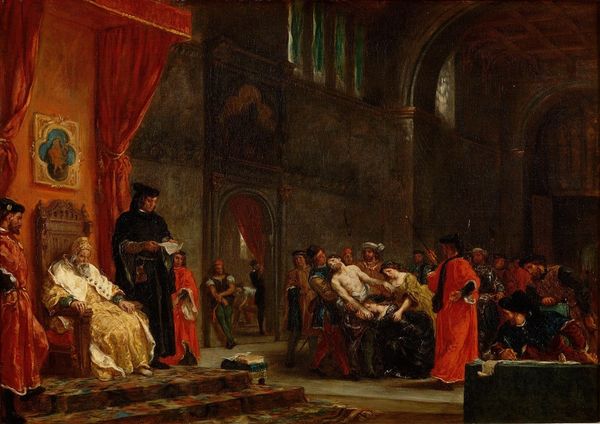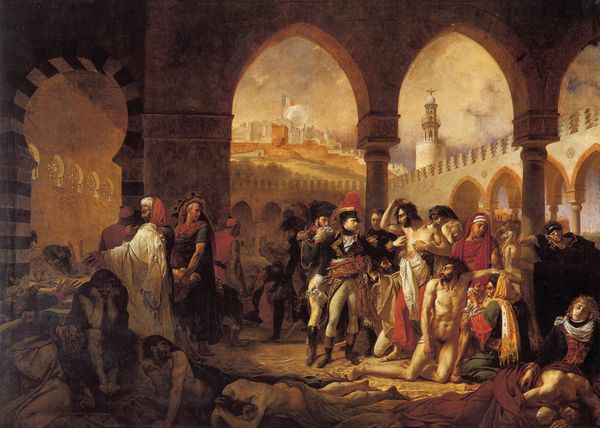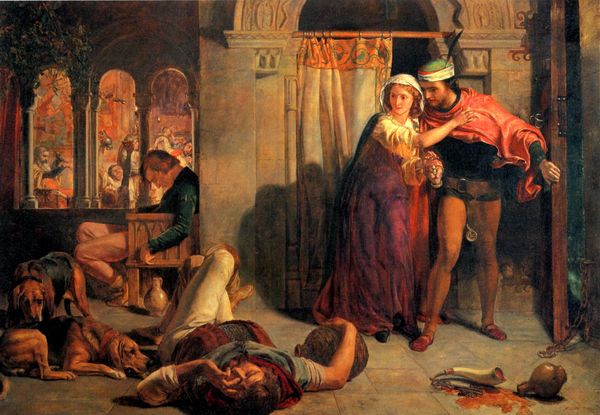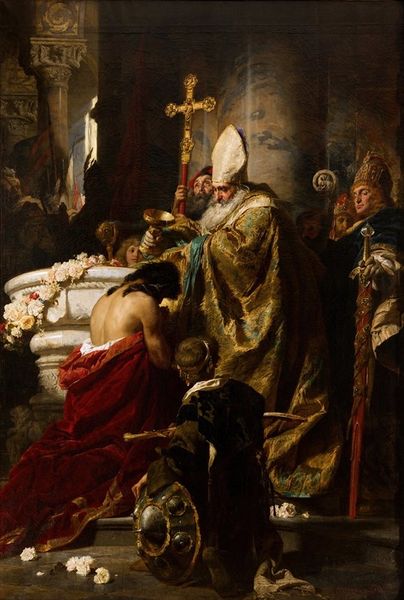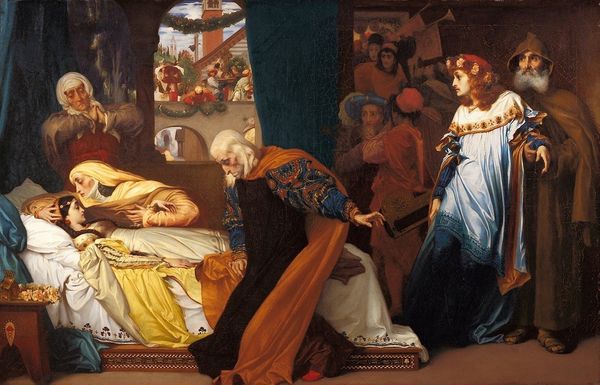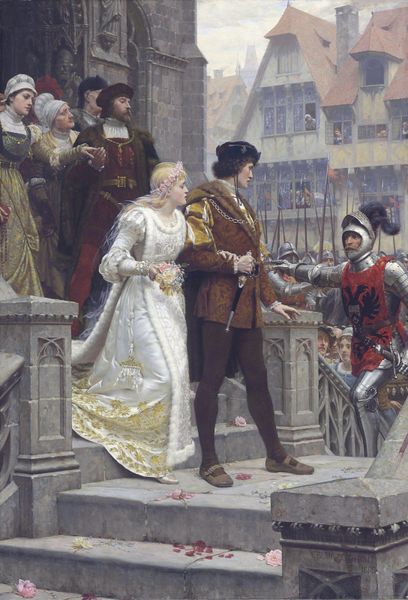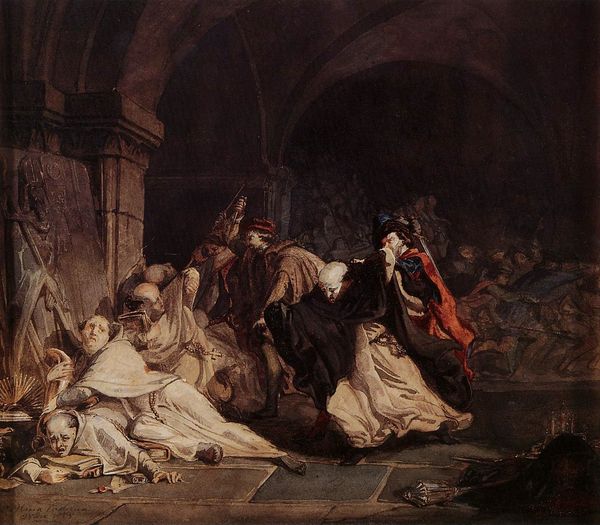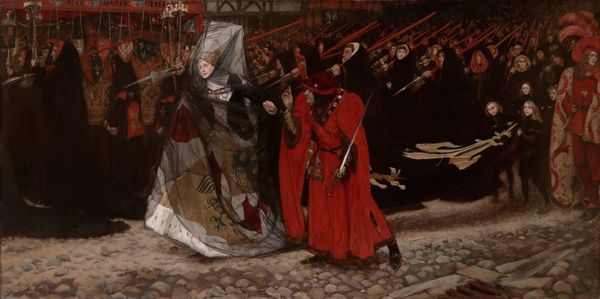
painting, oil-paint
#
public art
#
narrative-art
#
painting
#
oil-paint
#
landscape
#
figuration
#
cultural heritage
#
historic architecture
#
cityscape
#
history-painting
#
academic-art
#
realism
Copyright: Public domain
Curator: "One morning in front of the Louvre," painted by Édouard Debat-Ponsan in 1880. Oil on canvas, depicting a chilling historical scene. Editor: Wow. It’s… intense. The air of opulence against such brutal violence. It's unsettling, to say the least. The scale seems immense, amplifying the drama. Curator: The piece certainly aims to confront. Looking at the facture – the way Debat-Ponsan applied the oil paint – do you notice anything about its role in depicting social realities? Editor: There's a sharp contrast, isn’t there? The lavish costumes, rendered with almost obsessive detail, juxtaposed with the… rawness of the slain bodies. A dark irony blooms between silk and blood. He spares no brushstroke for beauty and bloodshed, equally obsessed! Curator: Precisely. Academic art in its capacity, documenting historical narrative. Observe the historical architecture rendered with care, with such clear linear perspective to create depth in a piece which seems focused only on its players. Think about the consumption of such scenes. Were they meant to instruct, to warn? And how did this kind of image impact the burgeoning political discourse of the time? Editor: Maybe both. It's a spectacle. A pretty stage, and a horrific bloodbath that becomes a silent scream within this gorgeous architectural box. The ladies and their perfect garb float, like bubbles over a dark pond. There's even, strangely, an aura of romanticism. The composition feels almost theatrical. Look at all that negative space in the foreground to better show what horrors the painting is alluding to! Curator: Romanticizing violence has a complicated history of its own. But let’s not disregard that such art, in its method and materiality, became a tool. It created and propagated specific readings of historical moments which played their own part in the events after it. The oil paints are not simple aesthetics here; they actively produce realities and shape understanding. Editor: I can’t escape the feeling that the true masterpiece of the image is how elegantly the story unravels. Almost dreamlike, you might even call it? I find myself haunted by its chilling message, even after staring at the work and picking it apart. A morbid fascination takes hold. Curator: Indeed. I find this image functions more as a piece of craftsmanship, illustrating more so than emoting any feelings through the oil paints themselves. The history breathes here and asks to be felt on your own skin, despite being held up as an artifact with a safe distance. Editor: Well said. And it makes you consider which distance is truly the safer option to pursue in your personal work or life...
Comments
No comments
Be the first to comment and join the conversation on the ultimate creative platform.



